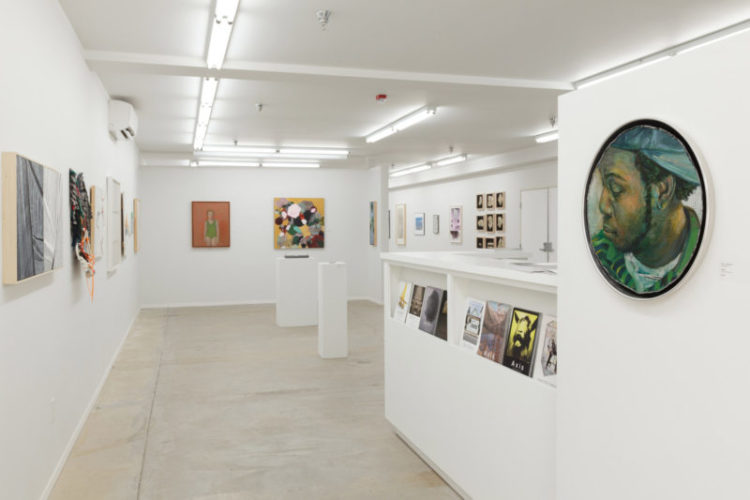
I’m quite pleased that Lucía Sanromán has selected my painting, Jerry, for exhibition in this year’s show.
Juror’s statement
For 13 years, Axis Gallery’s National Juried Exhibition has provided greater visibility for artists throughout the United States. In the age of Trump, when arts and culture are under constant and consistent attack in a way only paralleled by the Culture Wars of the 1990s, this alone should give us hope. But there is more, an artist-run cooperative in operation for 35 years now, Axis Gallery itself provides an example for a way of doing things—through collective support rather than individual gain—that is counter to the current national sentiment where competition, opposition, and racial politics are used to manage the population by appealing to our base instincts through social media. Like everyone else, artists and artisans of all kinds working throughout the United States are coming to terms with a new reality that at least shocks, and often feels alienating and violent. Indeed, of the over 1,200 artists who submitted artworks to this competition, many reflect on the current political climate directly by, proposing paintings, photography and video with overtly political content, in a natural reaction to a triggering and sometimes chilling news cycle.
Given this, the prevalence of work with political content indicated that my role was not to utilize the jurying process to describe a political theme, or to attempt to create an exhibition with a thematic focus, but rather, to remain sensitive and open to the quality of the work itself, and in this way allow for a narrative to emerge from the process itself that might point to what may not be obvious in the current cultural climate. The final selection of 47 artworks is diverse. Included are pieces that address this moment, such as Jenny Wu’s humorous appropriation of footage of the former Apprentice host and current President of the United States repeating “Believe me, oh, believe me” over and over, with the opposite effect; or Peter Hassen ‘s altered photographs with text that addresses landscape as contested territory; or Miguel Monroy Melgoza’s interventionist performance that tracks the movement of money in various licit and illicit scenarios. A broad variety of media caught my attention, included for the first time in an Axis competition, video work, like Susi Lopera’s humorous animated short. Also notable are many pieces made in traditional media such as Pamela Mooney’s quiet portrait of a swimmer, or Elizabeth Zunino’s intricate ink on paper drawing—an image reminiscent of 19th Century Arts and Crafts tradition but with an unexpected element that points to something more disturbing. Also present is an astonishingly intricate tapestry by Steven Donegan, where the shadow of photography is strongly felt. In general, the mimetic mechanics of the photograph have given way to augmented reality of digital media with works by David Gardner—a post-industrial landscape created using digital tools—and even a work created on the iPad by Kevin Pride that reflect the street culture of hip-hop and the pop visual fluency of the post-Internet generation.
As a group, the pieces do not openly mount an offense against the vitriol and hatred that is now encouraged in American public life, but they do give evidence of more connected and hopeful ways being in the world, where the creation of art is itself a form of resistance. Enmeshed in the quotidianity of making, the artists in this 13th edition beautifully inhabit the in-between space of communication.
Lucía Sanromán
Director of Visual Arts
Yerba Buena Center for the Arts